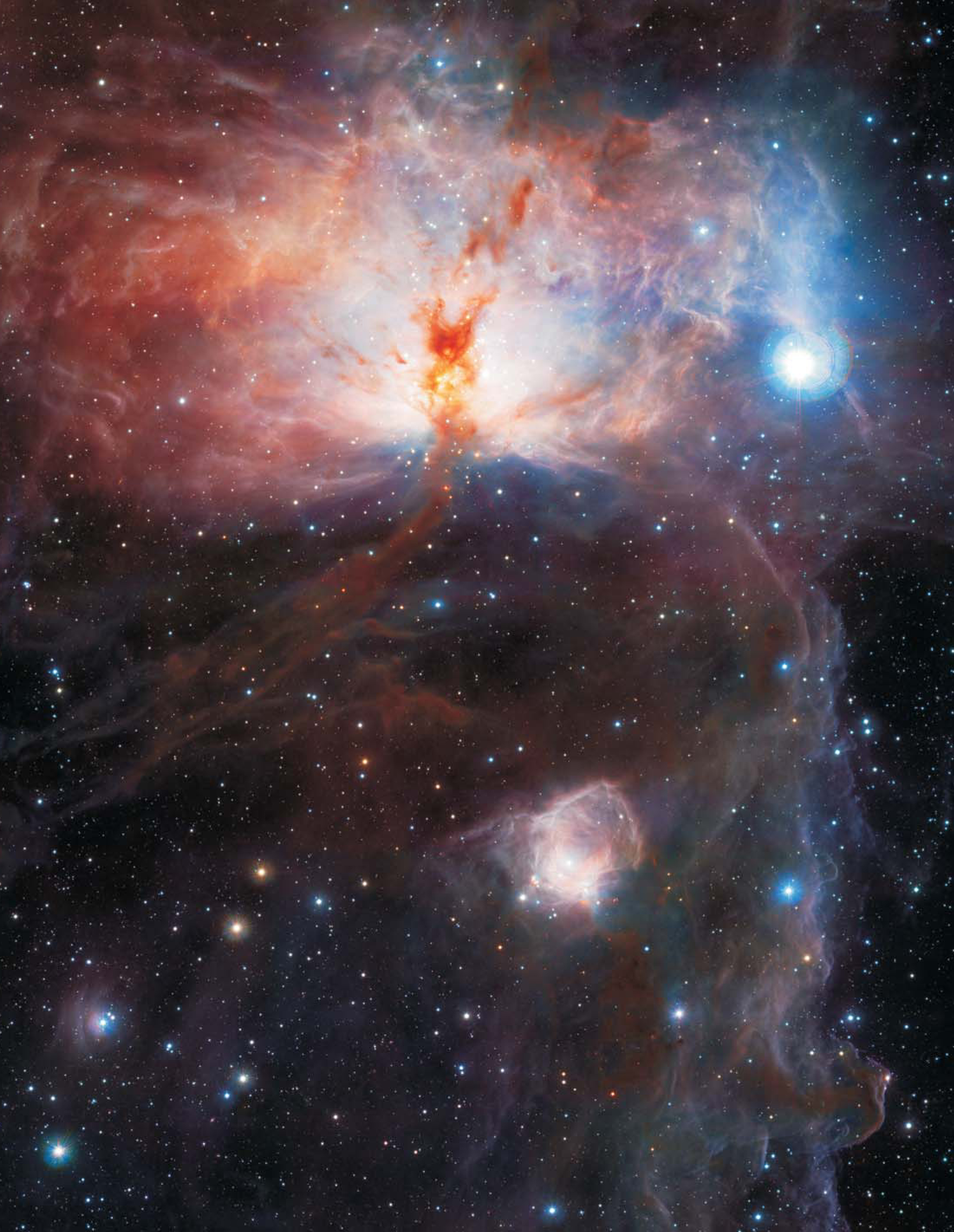A new VISTA on the southern sky
DOI: 10.1063/1.3366641
When the UK joined the European Southern Observatory in 2002, part of the joining fee was an IR survey telescope being developed by a consortium of 18 UK universities (see Physics Today, February 2008, page 25
VISTA boasts a 4.1-meter main mirror and 16 IR detectors sensitive to wavelengths between 0.84 and 2.5 µm. To prevent the faint incoming IR signal from being drowned out by blackbody radiation from the telescope itself, the detectors and filters are housed in a cryostat and kept at 72 K by circulating liquid nitrogen. The detectors’ combined 67 million pixels over a field of view 1.65° in diameter are anticipated to produce 300 GB of data per night.
Shown here is VISTA’s first released image: the Flame Nebula (NGC 2024) in the constellation Orion. When viewed in the visible, the nebula’s core is obscured by thick clouds of dust, but that stellar nursery’s cluster of young stars is unveiled in the IR. The wide field of view also captures the nebula NGC 2023 just below center and the Horsehead Nebula in the lower right.
To submit candidate images for Back Scatter, visit http://www.physicstoday.org/backscatter.html

(Image by ESO/J. Emerson/VISTA/ Cambridge Astronomical Survey Unit.)





